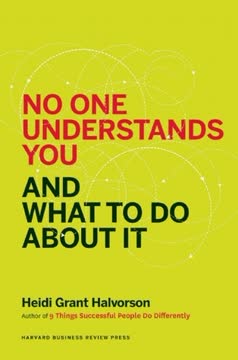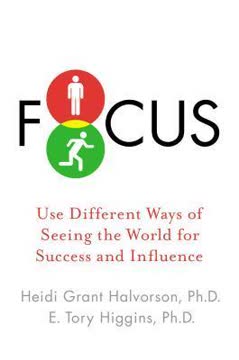Key Takeaways
1. We Are More Opaque Than We Think
The best book ever written on why it is so difficult for us humans to communicate with others and what we can do about it.
Transparency Illusion. We overestimate how clearly we communicate our thoughts and feelings. Our faces are less expressive than we believe, and subtle emotions are often missed or misinterpreted. This "transparency illusion" leads us to assume others understand our intentions, even when they don't.
Judgeability. Some people are easier to read than others. Being "judgeable" involves making relevant information about yourself available to others. This doesn't mean oversharing, but rather expressing yourself in ways that allow others to perceive your true qualities.
Interpretation is Key. Our actions and words are always subject to interpretation. Others don't see us objectively; they filter our behavior through their own experiences and biases. This is why people often have differing opinions about us, even those who know us well.
2. Cognitive Misers Use Shortcuts
Despite your best intentions, your perceptions of people are a mirage, contaminated by your past experiences, needs, and desires.
Heuristics and Assumptions. To conserve mental energy, we rely on heuristics (rules of thumb) and assumptions when perceiving others. These shortcuts, while efficient, can lead to biased and inaccurate judgments. Confirmation bias, primacy effect, and stereotyping are examples of these shortcuts.
Confirmation Bias. We tend to see what we expect to see. If someone believes you are intelligent, they will interpret your behavior as evidence of intelligence, regardless of whether it is truly present. This bias is shaped by stereotypes, past experiences, and cultural norms.
Stereotypes. Stereotypes are beliefs we hold about categories of people. These beliefs, whether positive or negative, influence how we interpret their behavior. Stereotypes can be used to our advantage, but they can also lead to unfair and inaccurate judgments.
3. Perception Occurs in Two Phases
This is a code book for deciphering one of the great riddles of life: why don’t others see us as we see ourselves?
Phase 1: Automatic and Biased. In the first phase of perception, we make quick, automatic judgments based on limited information and biases. This phase is effortless and largely unconscious, relying on assumptions and stereotypes. Correspondence bias, the tendency to attribute behavior to a person's character rather than the situation, is common in this phase.
Phase 2: Effortful Correction. The second phase involves conscious effort to correct initial impressions by considering situational factors and other relevant information. This phase requires mental energy and motivation, and it often doesn't occur due to cognitive miserliness.
The Two Systems. Phase 1 aligns with Daniel Kahneman's "System 1" thinking (fast, automatic), while Phase 2 aligns with "System 2" (slow, deliberate). To achieve accurate perception, we must engage System 2 and move beyond initial biases.
4. Trust Hinges on Warmth and Competence
There is deep power in knowing how to have people see you as only you are.
Two Key Questions. When determining trustworthiness, others subconsciously seek answers to two questions: Do you have good intentions toward me? Do you have the ability to act on those intentions? The answers are derived from perceptions of warmth and competence.
Conveying Warmth. Warmth signals good intentions. Strategies for projecting warmth include:
- Paying attention: Making eye contact, nodding, and smiling
- Showing empathy: Taking the other person's perspective and expressing regret
- Trusting first: Being cooperative and putting others' interests first
Conveying Competence. Competence signals the ability to act on intentions. Strategies for projecting competence include:
- (Appearing to) Have willpower: Avoiding behaviors indicative of low self-control
- Beware of overconfidence: Conveying a realistic sense of confidence and modesty
- Adopting a power pose: Using expansive body language to signal confidence
5. Power Warps Perception
There is deep power in knowing how to have people see you as only you are.
Asymmetrical Control. Power is defined as asymmetrical control over desired resources. Those with power get to make the decisions, while those without power must live with the results. This power dynamic distorts perception.
The Powerful are Less Perceptive. Powerful people often rely on cognitive shortcuts and stereotypes when perceiving others. They may not feel the need to form complex, nuanced views of those with less power. This can lead to biased judgments and missed opportunities.
Instrumentality is Key. To be seen accurately by the powerful, demonstrate your usefulness. Show how you can help them achieve their goals and make their lives easier. This will incentivize them to invest the mental energy required for Phase 2 processing.
6. The Ego Lens Protects Self-Esteem
Being an authentic leader means being perceived authentically.
Maintaining a Positive Self-View. The ego lens distorts perception to protect and enhance self-esteem. We tend to see ourselves as better than average and attribute our successes to our abilities while blaming failures on external factors.
Social Comparison. Self-esteem is often derived from social comparison. We compare ourselves to others to assess our abilities and accomplishments. To maintain positive self-esteem, we may engage in downward social comparison, focusing on those who are worse off than us.
Strategies to Reduce Threat. When someone else's success threatens our self-esteem, we may employ various strategies:
- Downward comparison: Focusing on our own strengths in other areas
- BIRGing (Basking in Reflected Glory): Associating with successful individuals or groups
- Devaluing the domain: Deciding that the area of success is not important to us
7. Promotion and Prevention Focus Shape Views
There is deep power in knowing how to have people see you as only you are.
Two Motivational Lenses. People tend to view the world through either a promotion focus (seeking gains and advancement) or a prevention focus (avoiding losses and maintaining security). These lenses shape their goals, strategies, and perceptions.
Promotion-Focused Characteristics. Promotion-focused individuals are eager, optimistic, and risk-taking. They are motivated by potential rewards and are open to new opportunities. They may be less detail-oriented and prone to errors.
Prevention-Focused Characteristics. Prevention-focused individuals are vigilant, cautious, and detail-oriented. They are motivated by avoiding mistakes and maintaining the status quo. They may be risk-averse and resistant to change.
8. Attachment Styles Influence Relationships
There is deep power in knowing how to have people see you as only you are.
Early Childhood Experiences. Our early childhood experiences with caregivers shape our attachment styles, which influence our relationships throughout life. Secure attachment leads to healthy relationships, while anxious and avoidant attachment can create challenges.
Anxious Attachment. Anxiously attached individuals crave intimacy but fear rejection. They are often needy, clingy, and emotionally volatile. They may misinterpret ambiguous situations as signs of rejection.
Avoidant Attachment. Avoidant individuals distrust others and avoid intimacy. They value independence and self-sufficiency. They may be emotionally distant and reluctant to provide support.
9. Overwhelm with Evidence to Correct Impressions
There is deep power in knowing how to have people see you as only you are.
Phase 2 Processing. To correct a bad impression, you must get your perceiver to enter Phase 2 processing, where they will consider situational factors and other relevant information. This requires effort and motivation on their part.
Bombardment Strategy. One approach is to overwhelm the perceiver with evidence that contradicts their initial impression. This evidence must be attention-getting and plentiful to overcome their existing biases.
The Key is Consistency. The key is to provide consistent evidence over time, demonstrating that your true character is different from the initial impression they formed. This requires patience and persistence.
10. Make Them Want to Revise Their Opinion
There is deep power in knowing how to have people see you as only you are.
Activate Egalitarian Goals. Remind the perceiver of their commitment to fairness and unbiased judgment. This can be done through compliments or by sharing your own experiences with bias.
Highlight Shared Group Memberships. Emphasize commonalities and shared group memberships to foster a sense of "us" rather than "them." This can reduce prejudice and increase positive perceptions.
Increase Interdependence. Create situations where the perceiver's outcomes depend on you. This will incentivize them to form a more accurate and positive impression of you.
Last updated:
FAQ
1. What’s "No One Understands You and What to Do About It" by Heidi Grant Halvorson about?
- Core premise: The book explores why there is often a gap between how we think we come across to others and how we are actually perceived.
- Science and stories: Halvorson uses psychological research and real-world examples to explain the mechanisms behind miscommunication and misunderstanding.
- Practical focus: The book aims to provide actionable strategies to help readers better manage how they are perceived and to interpret others more accurately.
- Goal: Ultimately, it’s about helping readers come across as they intend to, improving both professional and personal relationships.
2. Why should I read "No One Understands You and What to Do About It" by Heidi Grant Halvorson?
- Universal problem: Everyone struggles with being misunderstood or misjudged at some point, making the book relevant to all.
- Evidence-based advice: The book is grounded in social psychology, offering practical, research-backed solutions rather than generic tips.
- Professional and personal impact: Understanding and managing perception can lead to better workplace success, stronger relationships, and more effective communication.
- Self-awareness boost: Readers gain insight into their own blind spots and learn how to see themselves and others more clearly.
3. What are the key takeaways from "No One Understands You and What to Do About It"?
- Perception is flawed: People rarely see us as we see ourselves, and their perceptions are shaped by biases, assumptions, and limited information.
- Two-phase perception: First impressions are automatic and biased (Phase 1), while more accurate judgments require effort and motivation (Phase 2).
- Lenses of perception: Trust, power, and ego lenses significantly distort how we are seen and how we see others.
- Actionable strategies: By understanding these processes, we can take steps to communicate more clearly, correct misunderstandings, and influence how we are perceived.
4. How does Heidi Grant Halvorson define and explain the "transparency illusion" in "No One Understands You and What to Do About It"?
- Definition: The transparency illusion is the mistaken belief that our intentions, emotions, and thoughts are more obvious to others than they actually are.
- Research findings: Studies show that people overestimate how clear their goals and feelings are to others, leading to frequent misunderstandings.
- Practical impact: This illusion causes us to assume we’ve communicated effectively when, in reality, others may have no idea what we meant.
- Solution: The book encourages being more explicit and proactive in communication to bridge this gap.
5. What are the "two phases of perceiving people" described in "No One Understands You and What to Do About It"?
- Phase 1 – Automatic judgment: Initial impressions are formed quickly, unconsciously, and are heavily influenced by biases, stereotypes, and heuristics.
- Phase 2 – Effortful correction: With motivation and mental energy, perceivers can reconsider their initial judgments, taking context and situational factors into account.
- Bias dominance: Most real-life perception stops at Phase 1, meaning biases often go uncorrected.
- Implication: To be seen accurately, it’s crucial to manage first impressions and, when necessary, prompt others to enter Phase 2.
6. What are the main "lenses" that shape perception in "No One Understands You and What to Do About It"?
- Trust lens: People first assess whether you are a friend or foe, focusing on your warmth and competence.
- Power lens: Those with more power see others through a utilitarian lens, often relying on stereotypes and paying less attention unless it serves their goals.
- Ego lens: Perceivers are motivated to protect their self-esteem, which can lead to minimizing or resenting your strengths if they feel threatened.
- Personality-driven lenses: Additional lenses include promotion/prevention focus and attachment styles, which further color perception.
7. How does the "trust lens" work, and what advice does Heidi Grant Halvorson give for projecting trustworthiness?
- Warmth and competence: Trust is built when you project both warmth (good intentions) and competence (ability to act on intentions).
- Nonverbal cues: Eye contact, nodding, smiling, and active listening are key signals of warmth.
- Empathy and reliability: Showing empathy, apologizing for others’ hardships, and being reliable foster trust.
- Balance: Projecting moral aspects of warmth (like honesty and responsibility) can help avoid the "warm but incompetent" stereotype.
8. What is the "power lens," and how does it affect how powerful people perceive others in "No One Understands You and What to Do About It"?
- Self-focus: Powerful people are more self-focused, less empathetic, and more likely to use stereotypes and shortcuts in judging others.
- Instrumentality: They pay close attention only when it serves their goals or when you are instrumental to their success.
- Dynamic power: Power is context-dependent and can shift based on circumstances and needs.
- Advice: To be seen accurately by the powerful, demonstrate how you can help them achieve their objectives.
9. How does the "ego lens" influence perception, and what strategies does the book suggest for dealing with it?
- Self-esteem protection: Perceivers use the ego lens to maintain or boost their self-esteem, sometimes by downplaying your strengths or distancing themselves.
- Group dynamics: The ego lens operates at both individual and group levels, leading to in-group favoritism and out-group stereotyping.
- Mitigation strategies: Be modest, affirm the perceiver’s value, and emphasize shared group membership to reduce perceived threats.
- Us vs. them: Creating a sense of "us" helps others see your successes as shared rather than threatening.
10. What are the "promotion" and "prevention" lenses, and how do they affect communication according to Heidi Grant Halvorson?
- Promotion focus: Oriented toward gains, innovation, and risk-taking; motivated by potential rewards and positive framing.
- Prevention focus: Oriented toward safety, responsibility, and risk avoidance; motivated by potential losses and negative framing.
- Communication tailoring: Frame messages as opportunities for gain with promotion-focused people, and as ways to avoid loss with prevention-focused people.
- Team dynamics: Mixed-focus teams can be highly effective if each style is respected and communication is adapted accordingly.
11. How do attachment styles (anxious, avoidant, secure) act as lenses in perception, and what advice does the book offer for interacting with each?
- Secure attachment: These individuals are trusting and easy to connect with, causing few perception problems.
- Anxious attachment: Characterized by neediness, sensitivity to rejection, and overreaction to perceived slights; requires clear, reliable, and patient communication.
- Avoidant attachment: Marked by emotional distance and reluctance to depend on others; best approached with moderate warmth and respect for boundaries.
- Adaptation: Understanding these styles helps tailor your approach to reduce misunderstandings and build better relationships.
12. What strategies does "No One Understands You and What to Do About It" recommend for correcting bad impressions and overcoming misunderstandings?
- Overwhelm with evidence: Dramatically and repeatedly display the qualities you want to be recognized for, making it impossible to ignore the change.
- Motivate Phase 2 processing: Activate the perceiver’s fairness goals, remind them of times they misjudged others, or increase their sense of interdependence with you.
- Increase contact: Familiarity breeds liking; more exposure can help shift perceptions over time.
- Apologize effectively: Focus on the other person’s feelings and needs, offer empathy or compensation as appropriate, and restore a sense of "us" to repair trust.
Review Summary
No One Understands You and What to Do About It offers insights into human perception and communication. Readers found it informative, with practical advice on improving interpersonal interactions. The book explores cognitive biases, first impressions, and strategies for better self-presentation. Some praised its scientific approach and workplace focus, while others felt it oversimplified or lacked depth in certain areas. Overall, reviewers appreciated the book's accessible writing and valuable psychological concepts, though opinions varied on its effectiveness in addressing the titular problem.
Similar Books



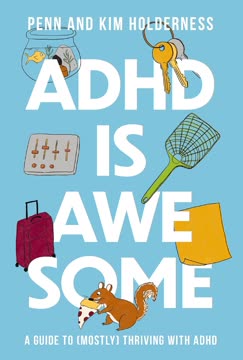
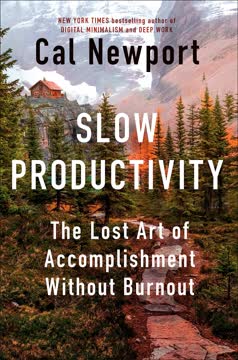
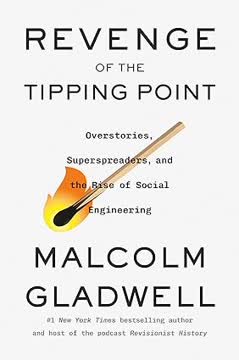




Download PDF
Download EPUB
.epub digital book format is ideal for reading ebooks on phones, tablets, and e-readers.
